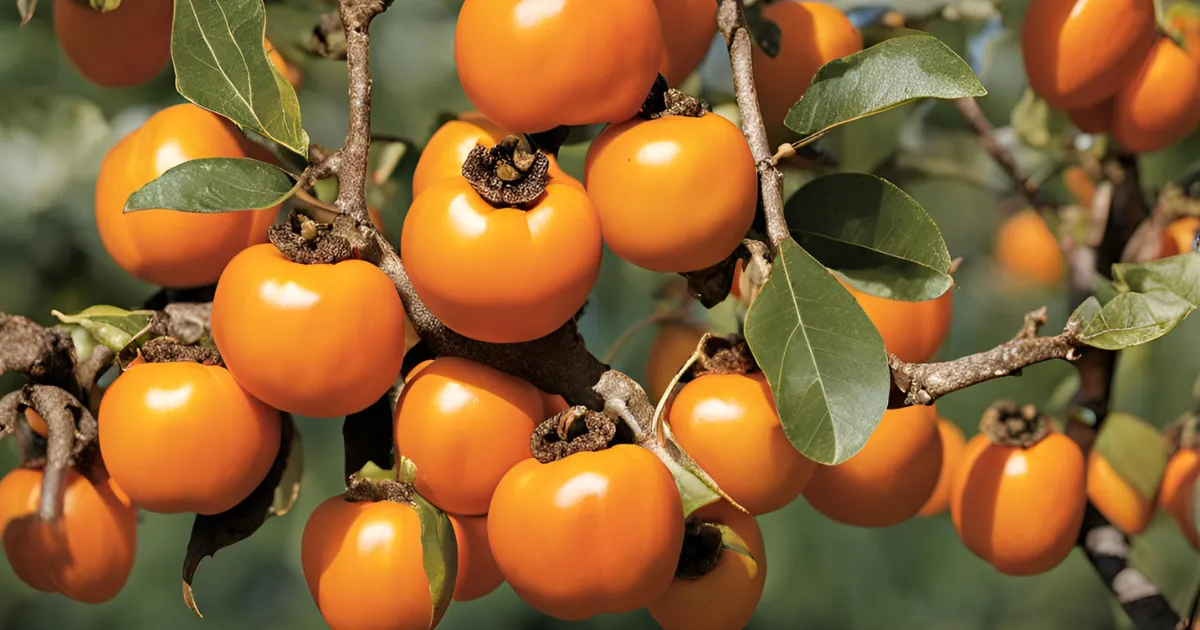
How to Grow Persimmons from Seed 🌱
Growing persimmons from seed can be one of the most rewarding long-term projects in your garden, but it’s also a lesson in patience, timing, and careful nurturing. I still remember the first time I decided to try my hand at it. Inspired by the honeyed sweetness of a perfectly ripe persimmon, I was determined to grow my own tree.
While the journey wasn’t quick or simple, it taught me the nuances of seed germination, the patience required for nurturing seedlings, and the long-term rewards of shepherding a tree to maturity.
1. Sourcing the Right Seeds
The process begins with selecting the right persimmons:
- Fruit Choice: Choose fully ripe, high-quality persimmons. Fruit ripened on the tree yields the best seeds.
- Varieties:
- American persimmons (Diospyros virginiana): Cold-hardy but smaller and often astringent until ripe.
- Asian persimmons (Diospyros kaki): Larger, sweeter, and less astringent, ideal for warmer climates.
Remember, seed-grown trees may differ from the parent due to genetic variability, offering a unique gardening adventure.
2. Cleaning and Preparing Seeds
After selecting your fruit:
- Slice the persimmon and remove the seeds.
- Rinse seeds under running water to remove pulp and sugars, which can promote mold.
- Pat seeds dry with a paper towel before proceeding.
3. Stratification: Breaking Dormancy
Persimmon seeds require stratification to germinate:
- Cold Stratification: Mimic winter by placing seeds in a moistened medium (e.g., peat moss and sand) in a sealed plastic bag.
- Refrigeration: Store at 35–40°F (2–4°C) for 2–3 months.
- Monitor: Check periodically to ensure the medium stays slightly damp and free of mold.
This process prepares the seeds for germination by simulating natural seasonal cycles.
4. Germination and Planting
After stratification:
- Planting Medium: Use a light, well-draining seed-starting mix.
- Depth: Plant seeds about 1 inch deep in pots.
- Temperature: Provide bottom heat with a heating mat set to 70–85°F (21–29°C).
- Light: Place pots under grow lights or in a sunny window.
Germination can take weeks or months—patience is key. Keep the soil consistently moist but avoid waterlogging.
5. Caring for Seedlings
Once seedlings emerge:
- Light: Rotate pots regularly for upright growth. Use a sunny window or grow lights.
- Watering: Maintain consistent moisture without oversaturating.
- Fertilizer: Use a balanced, slow-release fertilizer sparingly once seedlings have true leaves.
6. Hardening Off and Transplanting
When seedlings are strong enough:
- Hardening Off: Gradually introduce them to outdoor conditions over two weeks.
- Transplanting: Choose a site with:
- Full Sun: At least 8 hours of direct sunlight daily.
- Well-Drained Soil: Loamy soil with a pH of 6.0–7.0. Amend with compost if needed.
- Dig a hole twice as wide as the root ball, backfill with native soil, and water deeply after planting.
7. Mulching and Maintenance
- Mulch: Apply a 2–3 inch layer around the base, keeping it a few inches from the trunk. This conserves moisture and suppresses weeds.
- Pruning: Remove dead or crossing branches to encourage healthy airflow and structure.
- Watering: Provide regular water in the first few years to establish a strong root system. Avoid overwatering.
8. Long-Term Care and Patience
Persimmon trees grown from seed may take 7 or more years to bear fruit:
- Expectations: Seed-grown trees take longer to mature compared to grafted ones but can yield unique fruit.
- Pests and Diseases: Monitor for scale insects or fungal issues. Healthy trees are more resilient.
- Soil Health: Maintain fertility with light, balanced fertilization in early spring.
9. Grafting for Predictable Fruit
If you want consistent fruit quality:
- Grafting: Graft a known persimmon variety onto your seedling rootstock.
- Techniques: Use whip-and-tongue or bark grafting in late winter or early spring.
- This combines the hardy roots of your seedling with the reliable fruiting of a grafted variety.
10. Enjoying the Fruits of Your Labor
Over the years, your tree will mature:
- Watch it transition through seasonal cycles.
- Monitor for fruit as autumn approaches.
- Harvest persimmons at peak ripeness, savoring their honeyed sweetness.
Conclusion 🌳
Growing persimmons from seed is a slow but deeply fulfilling journey. From selecting the seed to nurturing seedlings and watching your tree grow, the process teaches patience, adaptability, and the rewards of working with nature. While the wait for fruit may be long, the satisfaction of harvesting a persimmon from your own seed-grown tree makes every step worthwhile.
Embrace the mystery and joy of cultivating a tree from scratch—you might just discover a variety that’s uniquely yours. Happy gardening!